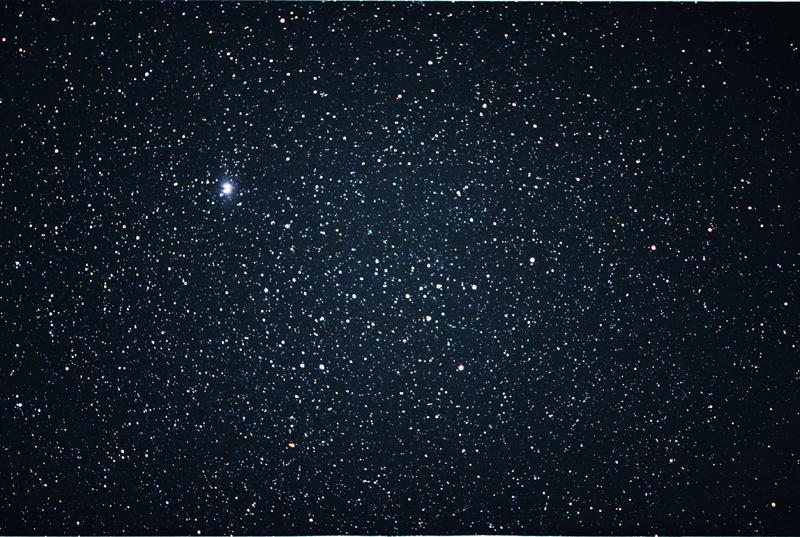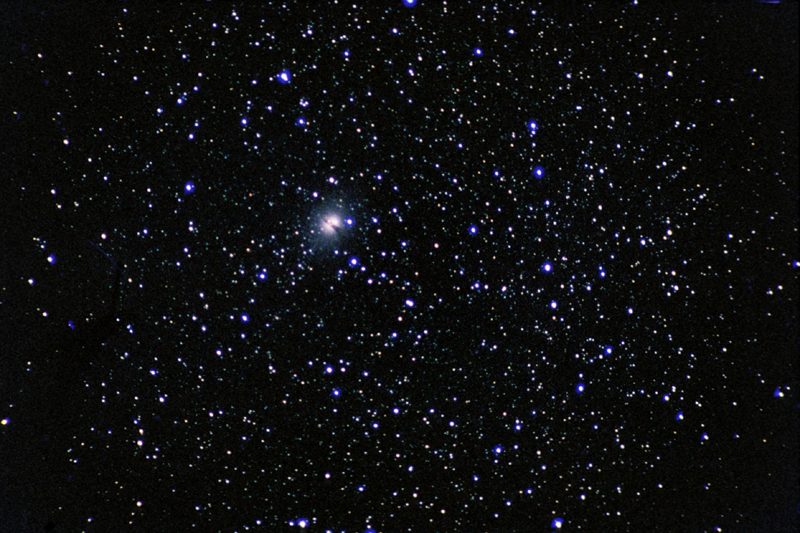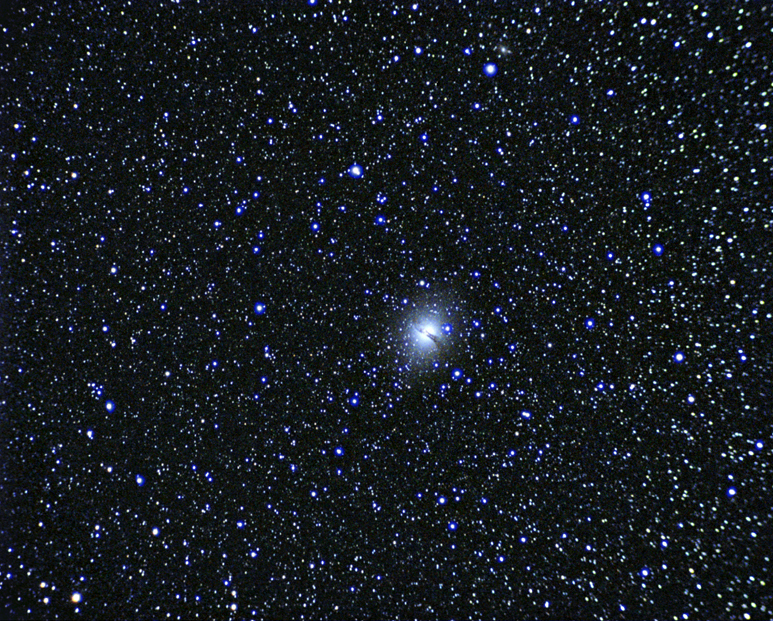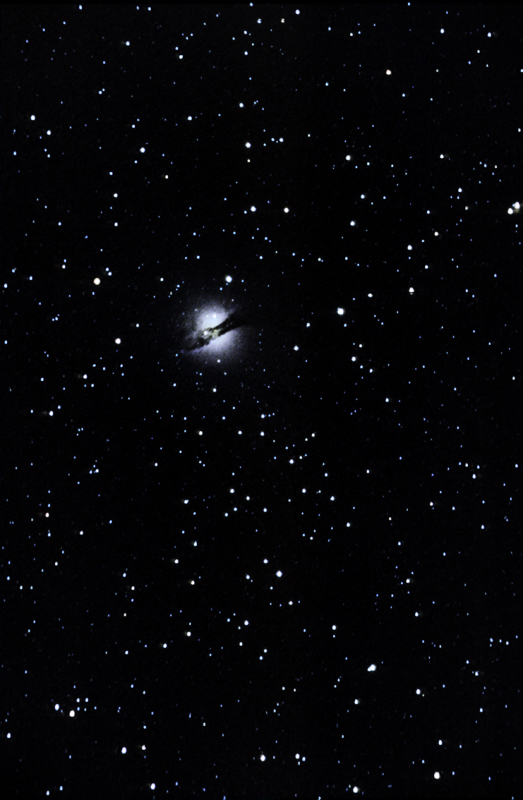
45 minutes exposure, Kodak elite chrome 400 slide film.
300mm f/2.8 Pentax lens.

A large and bright, S0 galaxy with a very prominent dust lane, NGC 5128 is one of the most interesting galaxies in the southern skies. It is bright enough to be visible in binoculars, and can be observed with the naked eye under very dark skies. The distance to the galaxy is somewhat uncertain, but appears to be about 10 million light years, making it slightly more distant than M81. If this is the case, then NGC 5128 is the most distant object visible to the naked eye. In an 8" telescope the dark dust lane crossing the centre of the galaxy is very prominent.

NGC 5128 is one of the largest galaxies known, with an estimated mass nearly 20 times that of the Milky Way. It is also one of the strongest sources of radio waves in the southern sky.

The prominent dark dust lane and the powerful radio emission are believed to be the result of NGC 5128 having absorbed a smaller spiral galaxy in the relatively recent past. The dust lane is the leftovers of the spiral galaxy while the radio emission and jets are believed to be the result of matter falling in to the central black hole.
